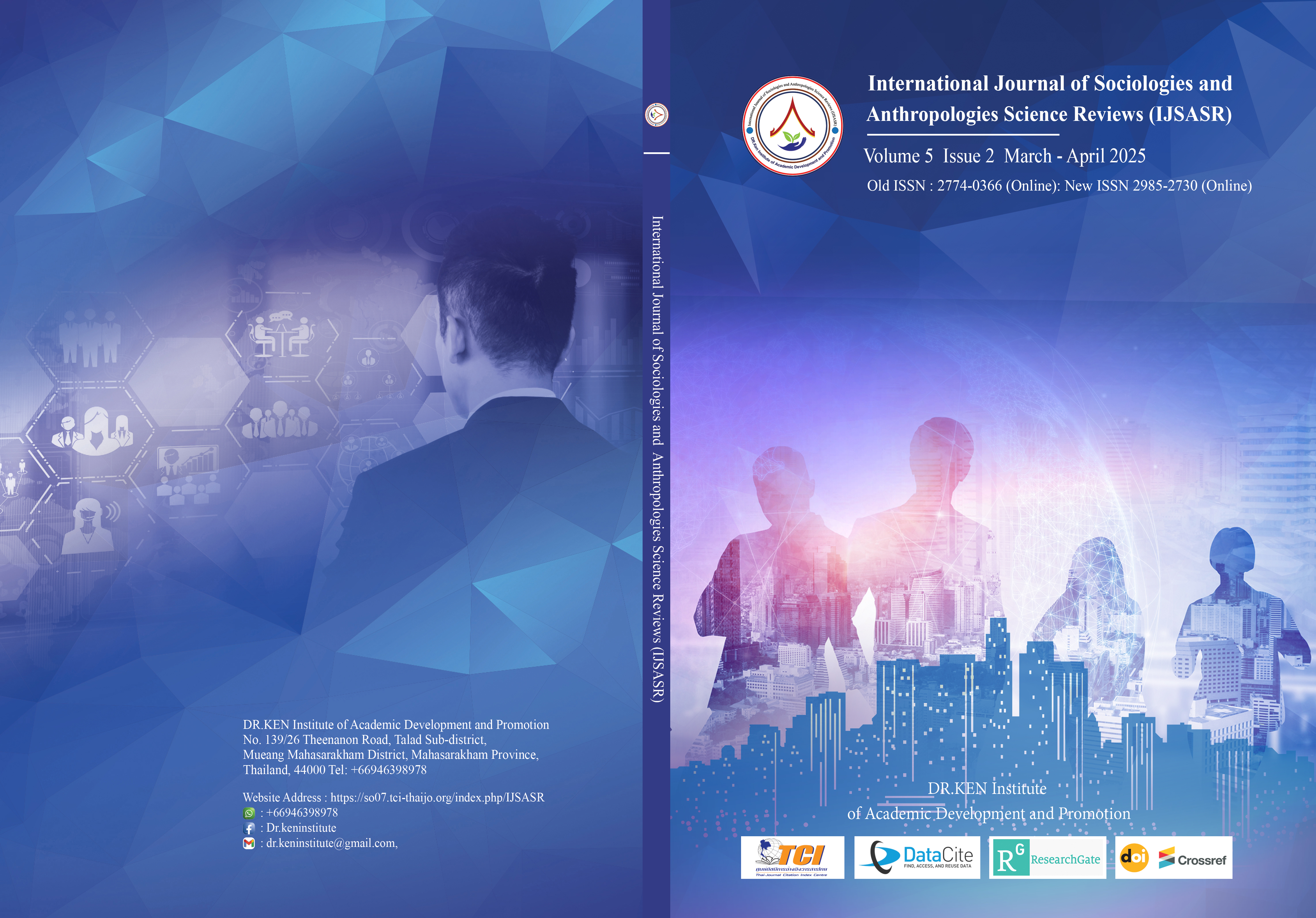Development of Wushu Changquan Training Program of Students Aged Between 8-10 Years
Main Article Content
Abstract
Background and Aim: There are many problems in traditional wushu, such as rigid teaching methods. Some traditional wushu teaching methods are too rigid and difficult to adapt to the needs and learning methods of modern students, resulting in poor learning outcomes; Lack of systematicity and scientificity, traditional wushu may lack systematicity and scientificity in teaching Changquan, making it difficult for students to understand the principles and theories behind it, which affects their learning and practice. Therefore, it is necessary to develop a specialized plan for Chang Quan training for students aged 8-10.
Materials and Methods: This research is quasi-experimental. The population of this experiment consists of first-year male students in the academic year 2023 at Capital University of Physical Education and Sports, Beijing City, who have chosen to study the subject of athletics, totaling 85 students. The 85 students will participate in the long jump test and record their scores. After the test, a total of 62 students passed the test criteria. The researcher used the simple random sampling method to select 20 students as a sample group. In this experiment, the training will be conducted in 8 weeks, comprising sessions held 5 days per week, 2 hours per day. Additionally, standing long jump test and long jump test to evaluate explosive power will be conducted before, after 4 weeks of training, and after 8 weeks of training. In this research, mean, standard deviation, one-way repeated measures ANOVA, and dependent t-tests were used to analyze the data.
Results: After 8 weeks of systematic training, the student's proficiency in Chang Quan techniques and physical fitness have significantly improved, proving the feasibility and effectiveness of the training plan. Specifically manifested in the following aspects: (1) Changquan technique level: Students have made significant progress in basic skills such as horse steps, archery steps, virtual steps, regular punches, hook punches, and swing punches, and their movements are more standardized and stable. Through the study of complete Chang Quan routines, students' fluency, coordination, and sense of rhythm in their movements have also been improved. (2) Physical fitness: Running, skipping rope, push-ups, sit-ups, and other exercises in physical training have improved students' cardiovascular function, strength, endurance, and flexibility, enhancing their comprehensive physical fitness. (4) Technical details: Through the guidance and correction of teachers' details, students' movements have become more standardized and precise, and their overall technical level has been improved.
Conclusion: This article improves traditional training methods and achieves significant training results by developing a Longquan training plan for students aged 8-10, combining modern educational theory and Longquan professional theory. Research has shown that a scientifically reasonable training plan can effectively improve students' proficiency in Chang Quan techniques and physical fitness, and cultivate wushu ethics and teamwork spirit.
Article Details

This work is licensed under a Creative Commons Attribution-NonCommercial-NoDerivatives 4.0 International License.
Copyright on any article in the International Journal of Sociologies and Anthropologies Science Reviews is retained by the author(s) under the under the Creative Commons Attribution-NonCommercial-NoDerivatives 4.0 International License. Permission to use text, content, images, etc. of publication. Any user to read, download, copy, distribute, print, search, or link to the full texts of articles, crawl them for indexing, pass them as data to software, or use them for any other lawful purpose. But do not use it for commercial use or with the intent to benefit any business.

References
Chen, C. (2021). The impact of basic wushu training on coordination ability of 8-10-year-old boys. Journal of Sports Science and Medicine, 20(4), 10043.
Garcia, J. (2021). The impact of traditional martial arts on youth development. Journal of Sports Sciences, 39(5), 123-134.
Gu, F. (2021). Wushu and its cultural significance in modern society. International Journal of Chinese Wushu, 12(2), 45-60.
Guo, Y., Zhang, L., & Cai, G. (2023). Exploring the integration of wushu in physical education curricula. Asian Journal of Physical Education, 18(1), 98-110.
Li, F., Hu, A., & Ji, D. (2023). The Significance and Prospective Study of Developing Wushu Culture. The perspective of National Soft Power.
Li, F., Hu, A., Ji, D. (2023). The Significance and Prospective Study of Developing Wushu Culture. The perspective of National Soft Power. 510500
Li, H., & Chen, J. (2019). The role of wushu in promoting physical fitness among adolescents. Chinese Journal of Sports Medicine, 25(3), 215-222.
Li, M. (2022). Wushu as a tool for cultural exchange: A historical perspective. Journal of Wushu Studies, 10(1), 67-78.
Li, X. (2019). The evolution of wushu in contemporary China. Wushu Research Quarterly, 15(4), 233-240.
Quartz, T., & Jia, Y. (2022). Wushu competitions and their influence on international relations. Journal of International Sport Studies, 5(2), 102-115.
Shen, C. (2023). Analysis of Training Methods for Chang Quan in Vocational School Wushu. 10th Issue of Boxing and Fighting in 2023
Shen, C. (2023). Youth engagement in wushu: Benefits and challenges. Journal of Youth Sports, 14(3), 45-58.
Traditional Wushu Research Center. (2016). Annual report on the state of wushu in China. Beijing: Traditional Wushu Research Center.
Yan, Z., & Li, D. (2023). Wushu's role in character building for young athletes. Journal of Sports Psychology, 9(1), 12-25.
Zhang, W. (2019). Application and Effect Analysis of Basic Skill Training in Wushus Chang Quan. Chinese Wushus Magazine, 25 (5), 78-83
Zhang, Y., Chen, X., & Wang, H. (2023). Core literacy development through wushu training. Journal of Sports Education, 22(2), 78-91.






